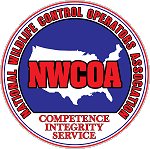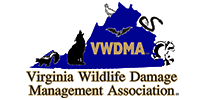Your Wildlife Professionals, Inc. provide deer removal & control on residential and commercial properties in Virginia. It is not always important to know everything about deer, but often clients need to know other information about deer in Virginia. Below is some additional information about deer, such as deer habitat, where do deer live, home range of a deer, deer food, deer habits, average life span of a deer, and deer health concerns that you may want to know. If you live in Alexandria, Arlington, Bedford, Blacksburg, Bristol, Charlottesville, Covington, Chesapeake, Danville, Fairfax, Fredericksburg, Hampton, Harrisonburg, Lexington, Lynchburg, Loudon, Manassas, Martinsville, Newport News, Norfolk, Richmond, Roanoke, Smith Mountain Lake, Staunton, Virginia Beach, Waynesboro, Williamsburg, Winchester, Wytheville, or Yorktown Virginia and would like to know more about deer, please give us a call.
​CLICK HERE to find Your Wildlife Professional in Virginia.
Deer Habitat:
The white-tailed deer prefers timbered areas with borders which provides favorable browse close to cover or areas close to agriculture.
Home or Where Do Deer Live:
The white-tailed deer does not have a permanent home and do not prepare a nest for the fawns. Their home usually changes with food abundance.
Home Range of a Deer:
1/2 – 1 ½ square miles. Shifts with food abundance. A bucks range during the breeding season or rut may extend out to 5 miles.
Deer Food:
White-tailed deer are browsing animals. They feed primarily on leaves, twigs, fruits of trees, shrubs, and the foliage of herbaceous plants. They will eat seeds, especially out of bird feeders, grasses and agricultural plants. When acorns start falling in September, they are the preferred food source until they are gone.
Deer Habits:
They are active throughout the day. Mostly from late afternoon through the night into the early morning daylight hours.
Average Life Span of a Deer:
2 - 3 years in the wild. Maximum lifespan is 20 years, but few live up to 10 years.
Deer Health Concerns:
Flukes, adult and larval tapeworms, fleas, adult and larval flies, ticks, lice, and roundworms parasitize white-tailed deer.
White-tailed deer serve as a feeding host and can transfer ticks that may have Lyme, Ehrlichiosis, and Babesiosis.
White-tailed deer are often the blame for Lyme disease. Lyme disease is a bacterium that is manufactured from a rodent, such as a chipmunk, that is moved by a nymph stage tick from the rodent to a human. White-tailed deer cannot contract Lyme disease. White-tailed deer are a host that the adult tick feeds off of until it falls off the deer, then gets on a person.
​CLICK HERE to find Your Wildlife Professional in Virginia.








